The start of the boating season is a bit earlier for me this year, by more than two months. That’s good because there’s so much to do. But it’s so hot here on the boat in Nuevo Vallarta that it’s hard to get much done.
I left San Diego on Friday, October 4th in a small car crammed with boat parts and supplies. Because I was traveling alone (due to illness on the part of my expected traveling companion) I headed to Arizona rather than crossing the Mexican border from California. Once I crossed at Nogales, I headed south about 20 miles until I found the funky compound with the Banjercito office, immigration and a few other somewhat-incomprehensible services. With the required documents in hand, I was able to get a visa and a temporary import permit for the car. Fortunately, no one needed to inspect the car, because if I had been directed to open the trunk, all the little parts would have tumbled to the pavement.
With that hurdle out of the way, I could relax slightly as I drove the rest of the day’s distance to Hermosillo. The roads were pretty good and the inspection stops by the Federales were quick. Most highway toll booths were taken over by community members who asked for donations. They were protesting the fact of the highway not been free.
Once in Hermosillo, I found my way to the Holiday Inn Express (not sure what I would have done without GPS because Hermosillo is a big, confusing place), which had relatively secure parking right in front of the lobby door. A sign saying that the hotel was not responsible for car robberies reminded me of the risk I was taking by transporting all these parts I worked pretty hard to procure. But the next morning all was right with the car as I got an early start south.
The second day of travel was much the same as the first. More brief inspections, more citizen-run toll booths, lots of wide-open space. A couple of puzzling accidents on the northbound side of the highway. How long will it take to clean up a very large truckload of steaming manure out of the lanes? I arrived in Los Mochis in the late afternoon and checked into the Fiesta Inn, which is at the edge of a shopping mall. The for-pay parking is part of the mall and there was a guard stationed near where the hotel guests park. I was encouraged, but still nervous about my payload because I was going to be leaving the car there for a week. I spent Sunday doing some errands nearby the hotel and scouting bus stations. My friend Jules arrived that night and we found an outdoor spot to have some wine and catch up on our summers. (Jules and her husband Jeff had visited the Canadian Maritimes while I had studied all summer to get my ham license and my captain’s license and to learn more about diesel and outboard engines.)
On Monday morning Jules and I started walking with our duffles toward a nearby bus station, which wasn’t far, but it was hot and our duffles were heavy. Before we even got out of the parking lot, we hailed a taxi. As he was approaching the station, the driver saw that our bus was leaving so he followed it and flagged it down. We jumped on board and relaxed for the two-hour ride to El Fuerte, one of Mexico’s many Pueblos Magicos. The bus left us in the middle of this clean, smallish town where people had gathered to shop and have lunch. Had it not been so hot and unshaded, and had we not been hauling duffles, I would have liked to just sit in the middle of the activity and gawk. We walked the two blocks to our hotel, La Mansion Serrana. As we checked in, the proprietor arranged for us to take a tour later, when the sun wasn’t so hot. We then walked around the town, had lunch and explored the local museum.
At four o’clock, our guide Felipe and helper arrived in a beat-up SUV, towing a boat. They took us to the Fuerte River and launched the boat. We sat in the bow and Felipe paddled from the stern as we floated down the river watching birds. We stopped in a farming area and walked 300 meters up a path to about 50 petroglyphs. Felipe oriented us along the way to all the plants and birds and then described the petroglyphs, which had been uncovered after the river had flooded several years ago. Once delivered back to our hotel, we had dinner in town and turned in for the night.
On Tuesday, we got an early start to catch the El Chepe train into the heart of Copper Canyon. The early part of the ride wasn’t noteworthy, but as the day went on we were treated to spectacular views of the steep faces of the mountains as the train slowly wound its way into higher elevations. As the day went on, I realized that I wasn’t feeling all that great. So when we got to our hotel in Divisadero (along the Continental Divide) I crashed for the evening while Jules integrated with the handful of other guests.
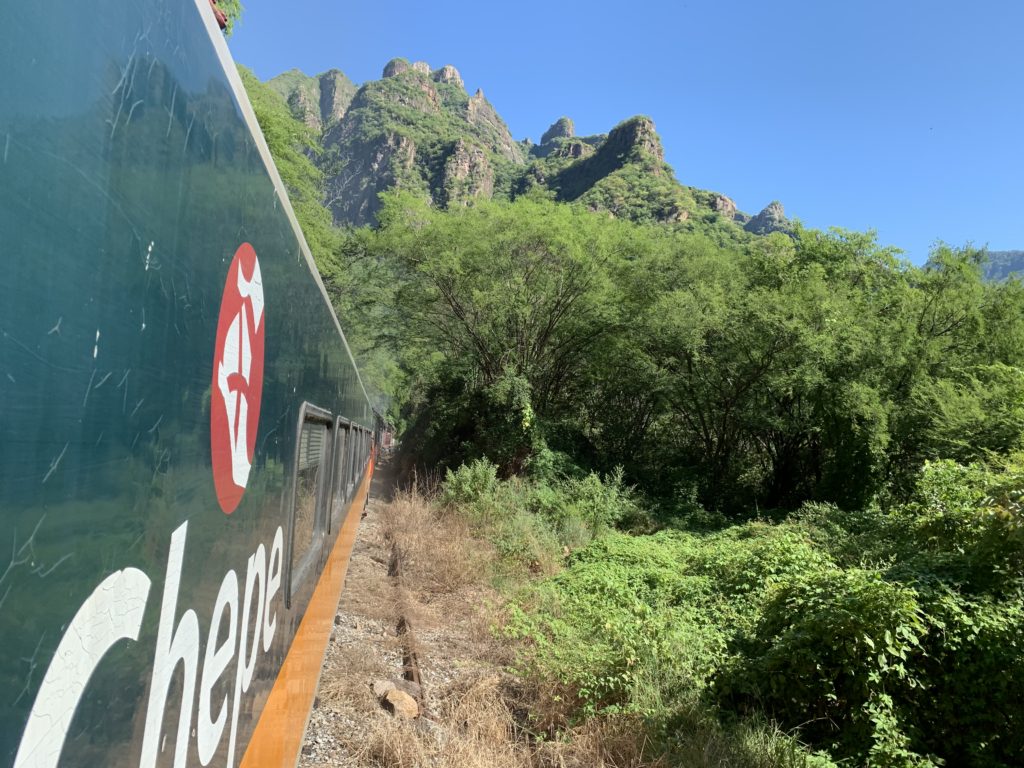
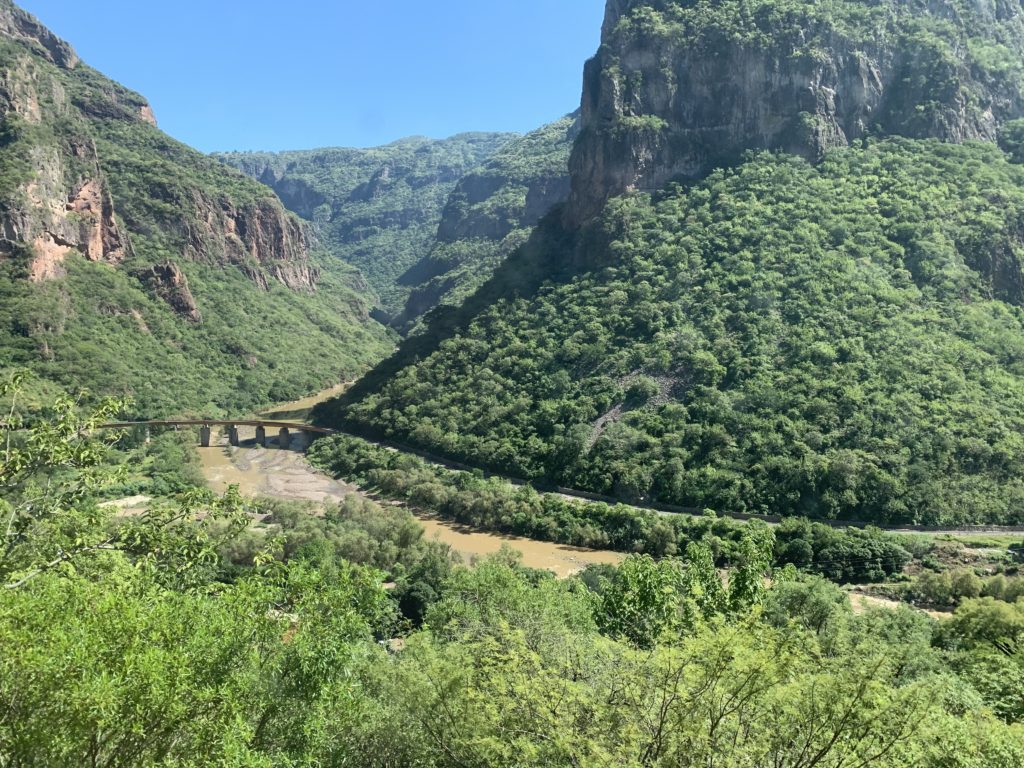
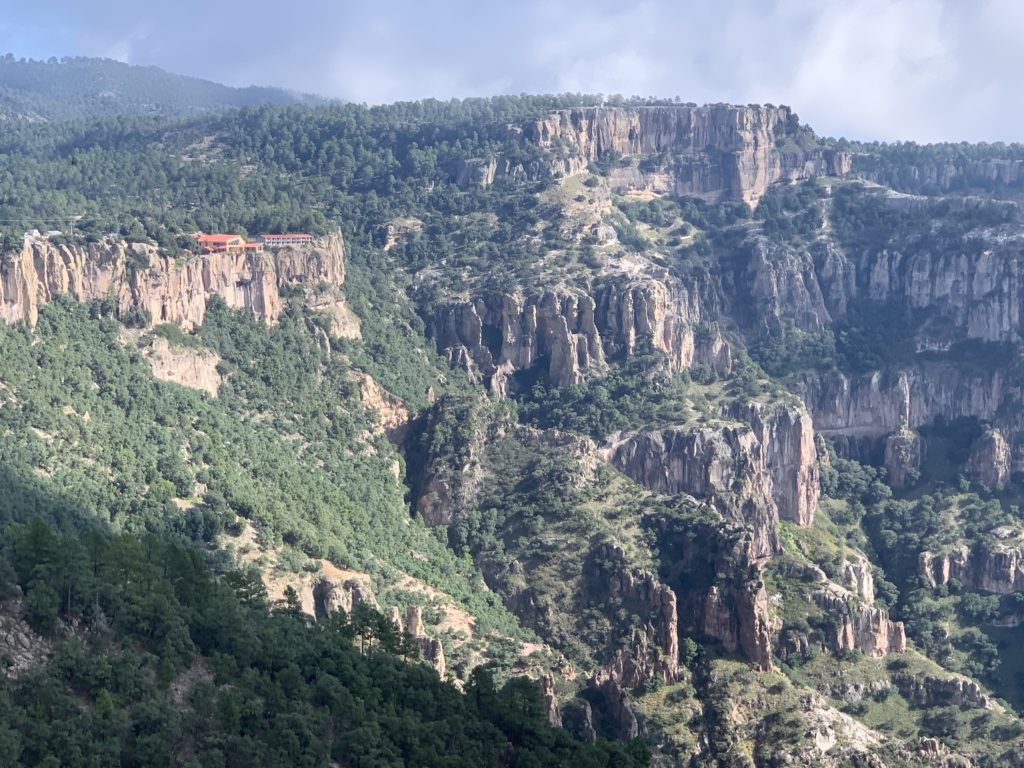
The next day, we walked to the adventure park to look into our options for the day. We decided we didn’t want to ride the zip line. And several workers told us we couldn’t hike down into the canyon without a guide, and there were no guides. They also said that we couldn’t take the teleferico down and hike at the bottom because it was closing early for maintenance and we would be stranded. Tired of hearing no, we rode the teleferico down and began a hike back up, with no guide and a few directions from the teleferico operator. The hike was hot and exhausting and at times we didn’t have a trail. But we could see where we wanted to go because the teleferico cables stretched overhead. Our path took us through small settlements of Tarahumara (Raramuri) families and along a small river gorge. We had water but just a half of a Clif bar for food. When we finally found our way back to the adventure park, their restaurant looked very attractive for a late lunch/early dinner.
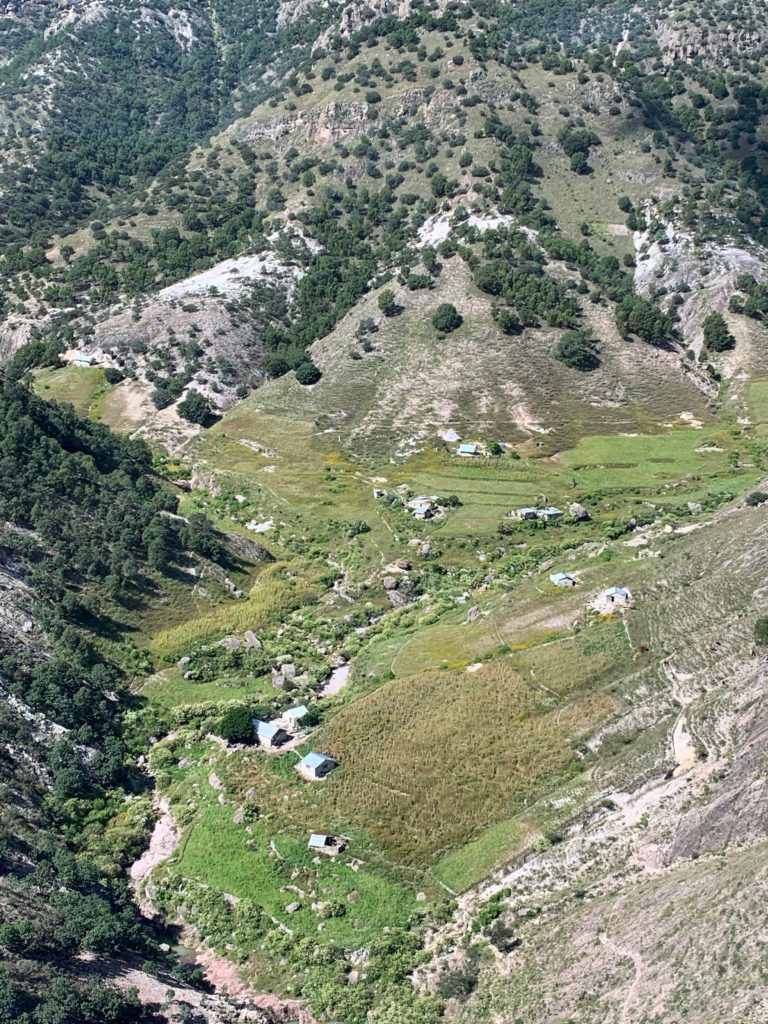
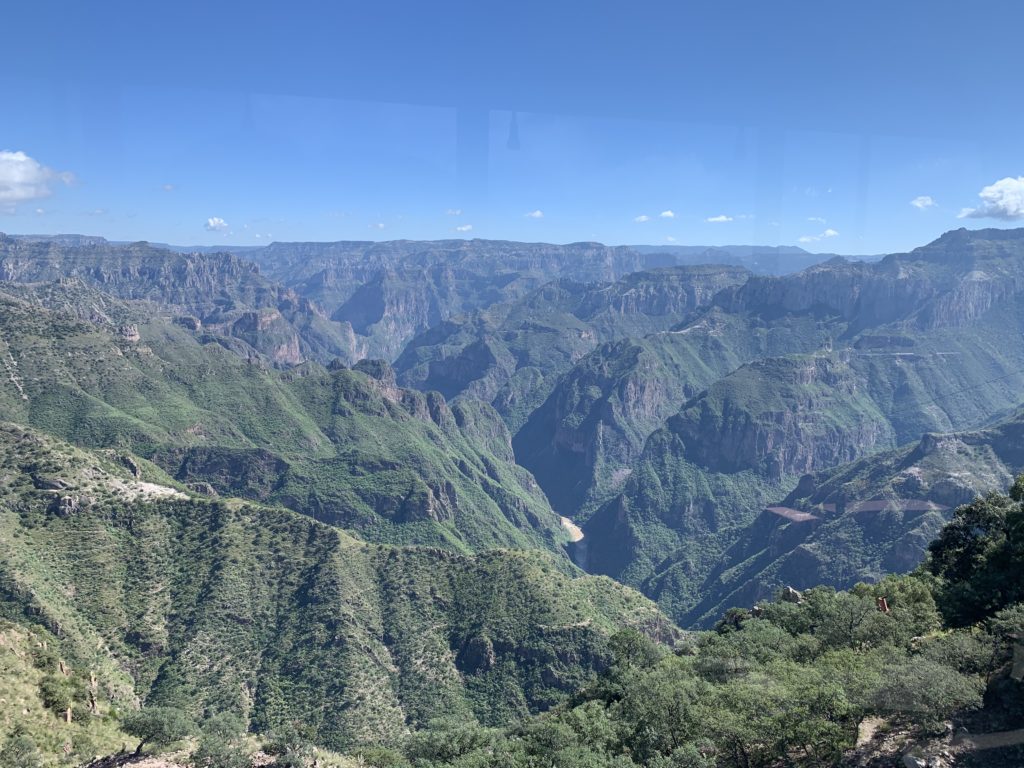
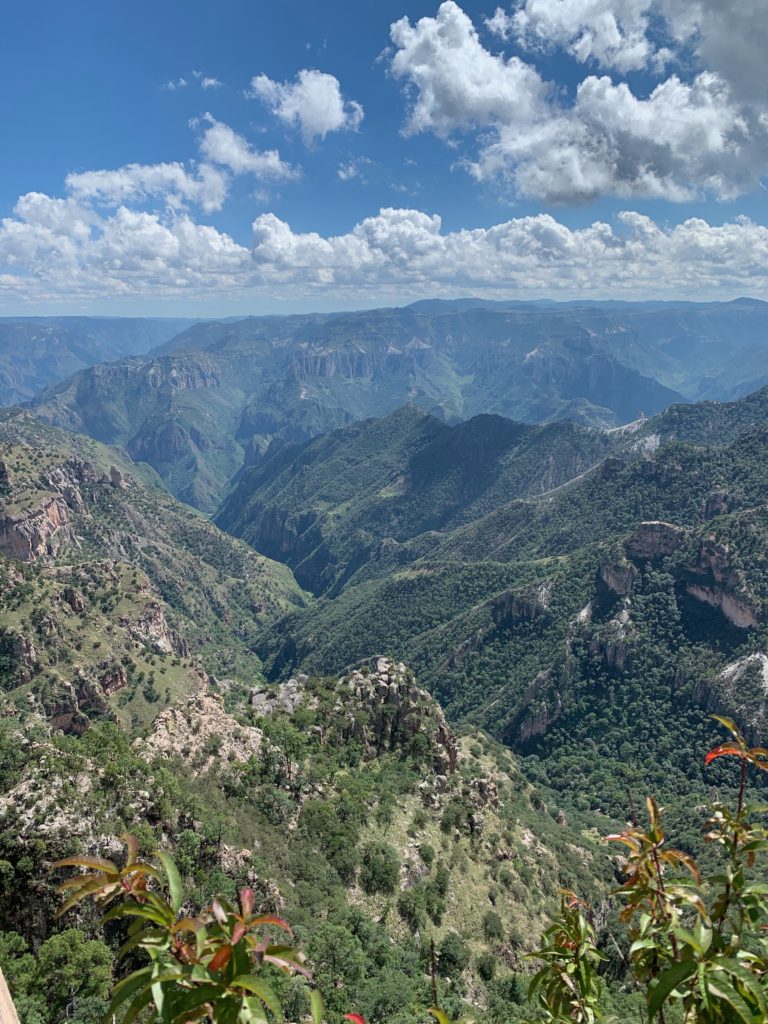
When we returned to our rustic, mountain-style hotel, it had been taken over by a very large group of retired teachers from all over Mexico. They were having a grand time together and would be our traveling companions the next day on the train as it returned west. The next day we walked several miles through the adventure park and back to take a look at the Hotel Mirador and its views before catching our train.
On the train, we traveled two hours back to the town of Bahuichivo. There, we were picked up and driven to our hotel in the town of Cerocahui. The La Mision Hotel is very nice but a tad expensive because they monetize everything. As the only guests that night, we had a private tour of a local girls school and the hotel vineyard, which included a wine tasting. Because it was the only option in town, dinner was also expensive but the food was good.
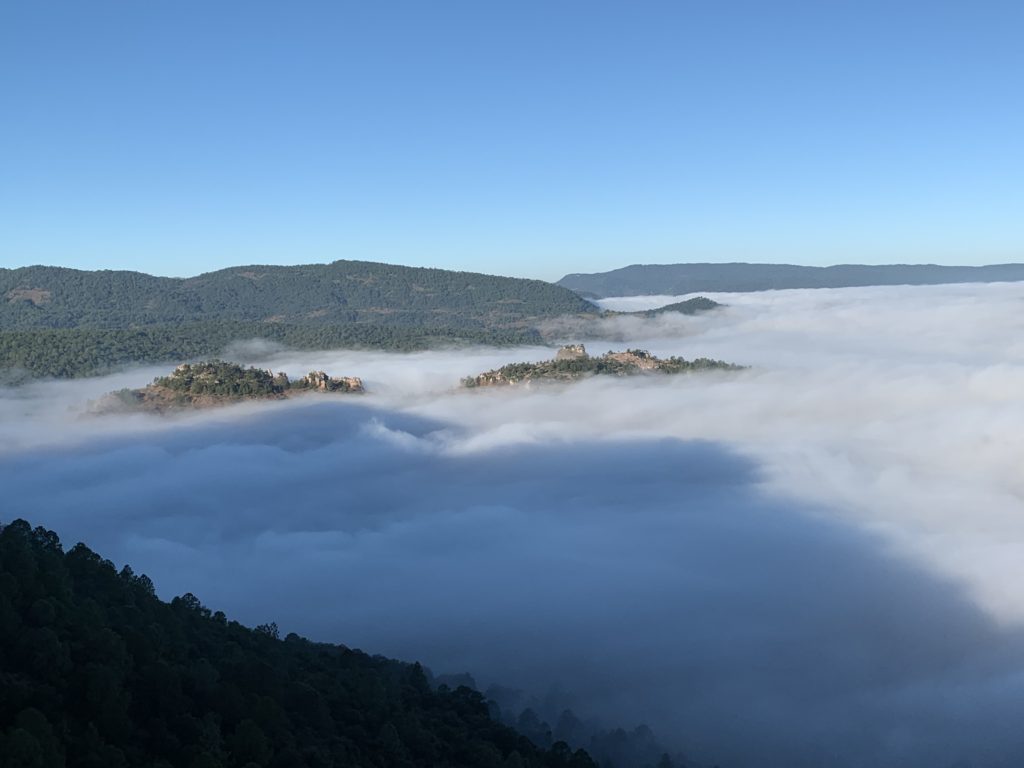
The next day we were driven about an hour or so to the Mirador Cerro del Gallego. You look into the second-deepest canyon in the world and see the town of Urique, nestled right by a river. You can stand on a platform that juts out into the middle of nowhere and be awed and terrified at the same time. (Unfortunately, the lighting at that time of the day was bad for photography.)
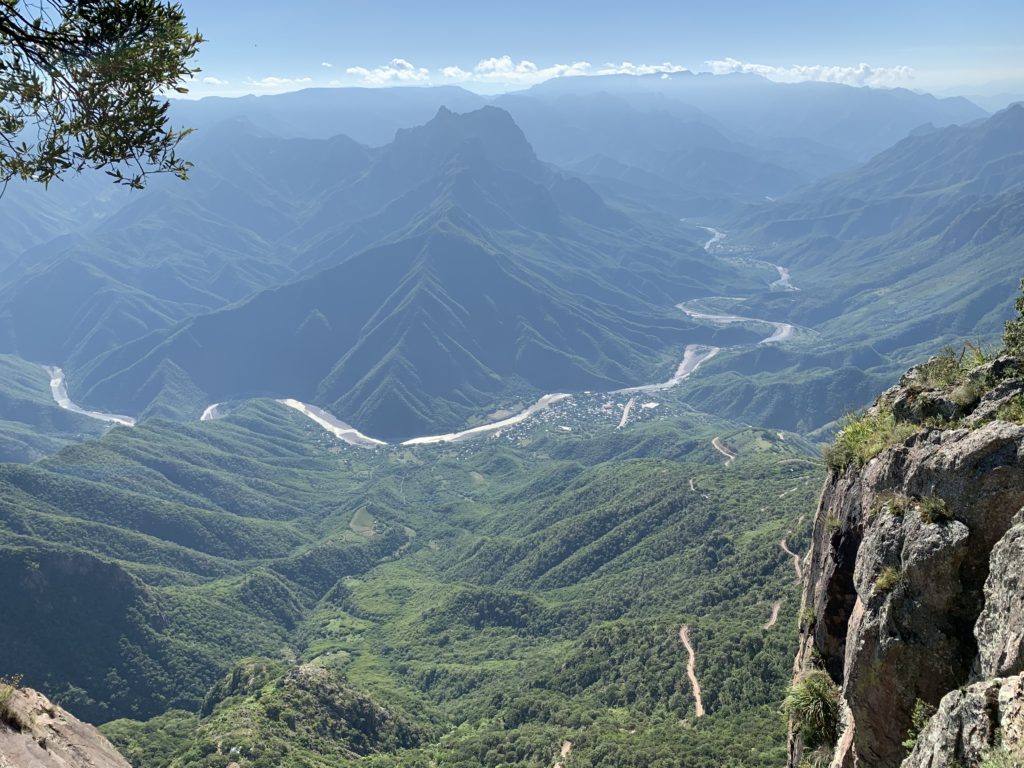
As soon as we got back to the hotel, we set out to find the waterfall right outside of town. It wasn’t too hard to find and the trail leading up to the fall was beautiful. As we were walking back, we bumped into the owner of our next hotel. He was coming to pick us up, so timing was perfect. (Hotel La Mision was expecting 57 people that day so we couldn’t stay there another night.)
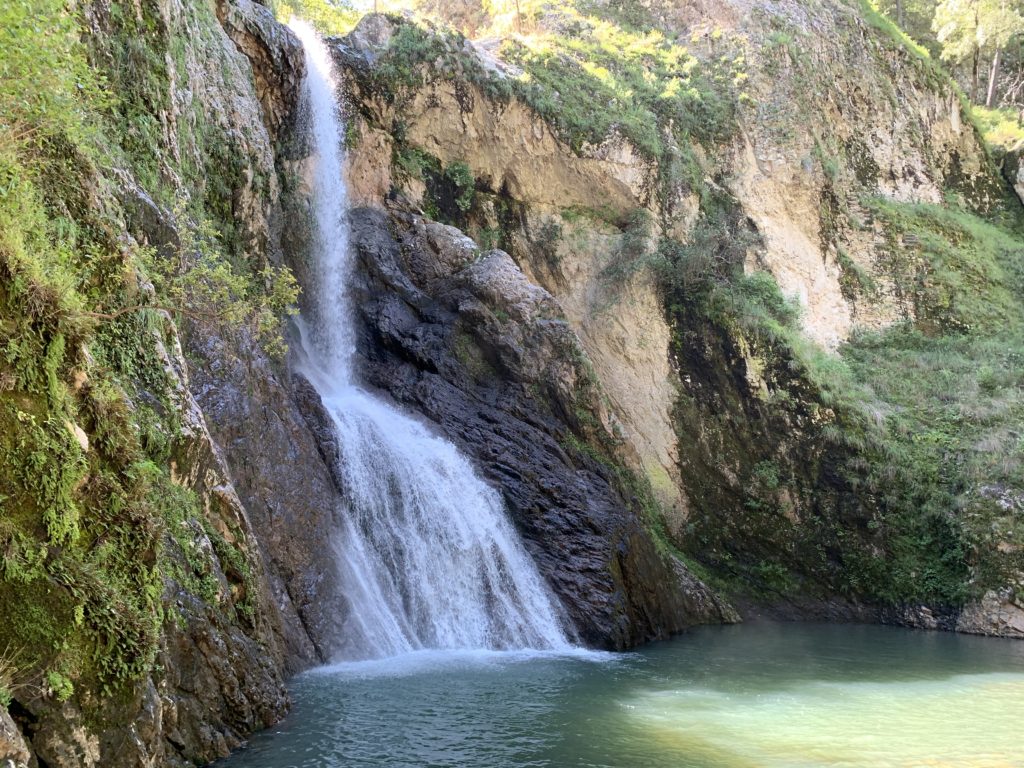
Mario is one of three brothers who run a mountain-top eco-lodge outside of Cerocahui. His grandfather started Rancho San Isidro more than 60 years ago. Grandfather was Mestizo but he married a Tarahumara woman and their son married a Tarahumara woman. The Rancho sits next to their uncle’s ranch and is surrounded by shared Tarahumara forest. They have built a bunch of creative cabanas for guests. Our spacious adobe room sat alone overlooking a canyon and they built a fire in the pit for us that night. They offer all kinds of activities. We elected to go horse-back riding with Mario’s brother Tito but we also could have gone on long hikes all through the mountain trails. The family is very gracious and helpful and the food is great. After our ride, the brothers delivered us back to the train station and we rode six hours back to Los Mochis.
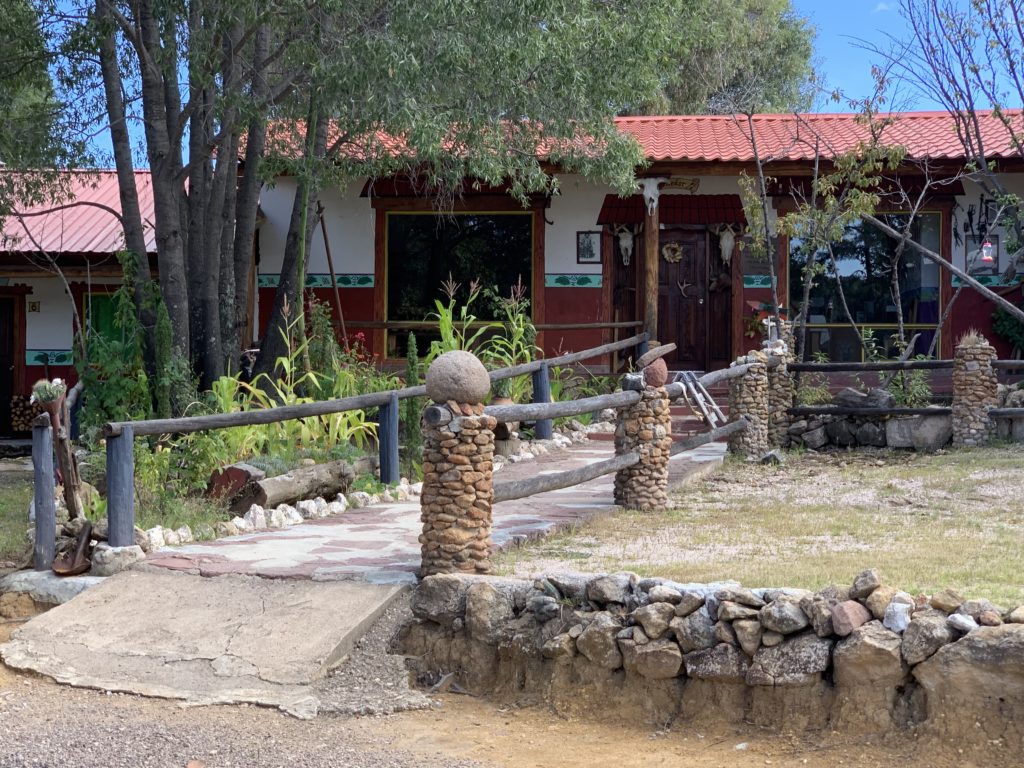

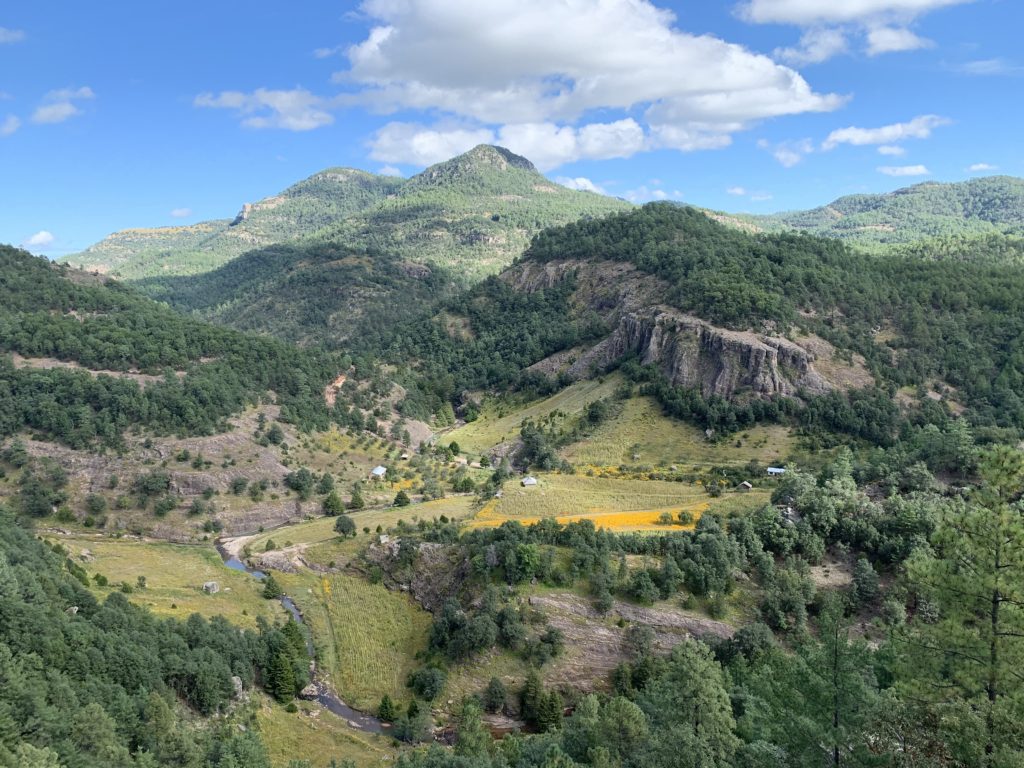

I was very relieved to find the car unmolested when we arrived back at the hotel. We got to explore Copper Canyon and avoid the loss of material possessions. We set out early on Sunday morning for Nuevo Vallarta. The trip was uneventful except that some of the people who had taken over toll booths were rather menacing and would block our way if we didn’t give them the amount of pesos they wanted. We stopped at a mall in Mazatlan to have lunch, fuel up and go to an ATM. The last part of the trip, from San Blas to Nuevo Vallarta is slow and tedious, but scenic. We arrived at the marina at about 7 o’clock, in time to have dinner with Jeff at a local taco place.
Since arriving at the marina, I’ve mostly been trying to cope with the heat while muddling through some purging and reorganization of gear. It’s about 95 degrees in the boat during the day. I have fans going, but unlike most boaters here, I have no air conditioning. Right away, mechanic Gil and his son Gilberto started work on my motor. They’ve replaced the motor mounts and brackets, aligned the engine with the shaft, changed out all the hoses, installed a new throttle cable, inspected the fuel injection pump, cleaned the heat exchanger and injectors, changed the fuel filters and v-belt, replaced the coolant, and probably a few other things. So even though I’m not accomplishing much, they are.
